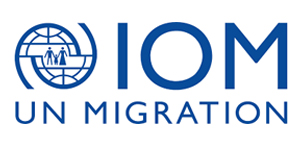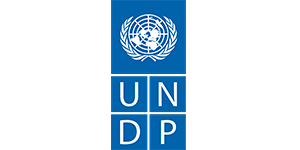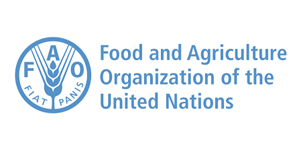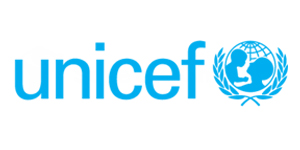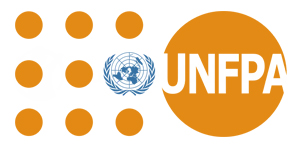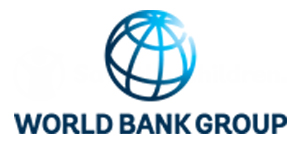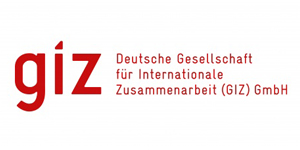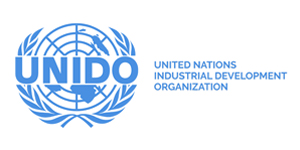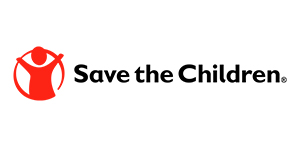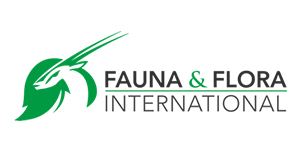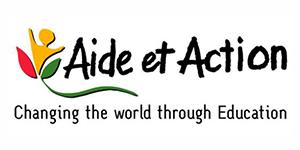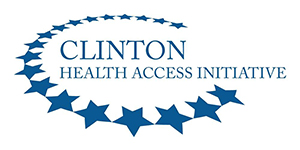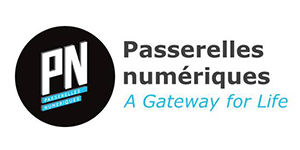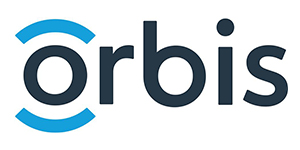I. Background
UN Women, grounded in the vision of equality enshrined in the Charter of the United Nations (UN), works for the elimination of discrimination against women and girls; the empowerment of women; and the achievement of equality between women and men as partners and beneficiaries of development, human rights, humanitarian action and peace and security. Placing women's rights at the center of all its efforts, UN Women will lead and coordinate UN system efforts to ensure that commitments on gender equality and gender mainstreaming translate into action throughout the world. It will provide strong and coherent leadership in support of Member States' priorities and efforts, building effective partnerships with civil society and other relevant actors.
Based on UN legislative mandates and the UNW Strategic Plan, the Regional Office for Asia and the Pacific (ROAP) is tasked with providing strategic program development, policy/technical advisory services and quality assurance support to Multi Country Offices and Country Offices (COs). It undertakes or coordinates regional research and data analysis; advises on norms, policies and strategies for achieving the internationally and regionally agreed goals related to gender equality and women's empowerment issues. It acts as a knowledge hub at the regional level, collecting evidence on progress and emerging issues and sharing knowledge on innovative approaches and lessons learned in implementation.
UN Women ROAP is spearheading a regional project entitled 'Strengthening Human Rights and Gender Equality through Climate Change Action and Disaster Risk Reduction' also known as 'EmPower: Women for Climate-Resilient Societies'. This is a joint programme being implemented in partnership with the Regional Office for Asia and the Pacific of UN Environment. It is a five-year project which began in April 2018 and is funded by the Swedish International Development Agency (Sida).
The Project aims to contribute to the overall Outcome of addressing key drivers of gender-based vulnerabilities through implementation of climate change and DRR actions.
To achieve this Outcome, the Project will invest in five output areas, as follows:
- Output 1: CSOs representing women and women's groups are able to lead, participate in and influence climate change and DRR decision-making processes;
- Output 2: Governments and key stakeholders are able to generate, analyze and use sex, age, and diversity disaggregated data to inform climate change and disaster risks and actions;
- Output 3: National climate change and DRR policy makers are able to integrate and enhance responsiveness to gender equality commitments;
- Output 4: Women are able to exercise rights to access and control economic resources, through renewable energy to build resilient and transformative livelihoods;
- Output 5: Regional normative processes, knowledge products and platforms on climate change and DRR integrate and enhance responsiveness to gender equality and human rights.
The project is implemented at the national level in three countries in Asia, Bangladesh, Cambodia and Viet Nam, and at the regional level to influence the intergovernmental and normative regional processes for climate change and DRR to be more gender-responsive. The project is led by UN Women and is implemented jointly by UN Women and UN Environment. UN Women is responsible for the implementation of Outputs 1 and 2 and co-leads the implementation of Outputs 3 and 5 with UN Environment, while the implementation of Output 4 is led by UN Environment.
Duties and Responsibilities
II. Objective of the Mid-Term Review
The purpose and role of evaluations in UN Women is to enhance accountability, inform decision-making and contribute to learning on the best ways to achieve women's empowerment and gender equality through the mandated areas of work of UN Women: normative, operational and coordination. Evaluations are essential components aimed at assessing relevance of the project objectives as well as efficiency, effectiveness and sustainability. As per Empower's Project Document and Programme Cooperation Agreement, an Independent Final Evaluation will be undertaken in accordance with the guidance from UN Evaluation Group and involving the evaluation units of both concerned UN organizations. In addition to evaluating the projects results, both the Final Evaluation and the Mid-Term Review will also assess the contribution of the project governance arrangement to government agencies' understanding of a joint approach to gender-responsive, right-based, climate change resilience and DRR.
The Mid-Term Review is key for the purpose of establishing whether the project is heading towards the set goals and objectives, thereafter informing management and control decisions by project management. It is important in building organizational confidence in the project implementation strategies, or in the case where indicators are not pointing towards success, acting as a call to the change of implementation strategies. It will provide inputs to revise the Project results framework, if and where appropriate. The performance of the project will be assessed against the indicators presented in the results and reporting framework
The Mid-Term review will be conducted in the first half of 2020.
It will feed into the Final Project Evaluation that will take place in 2022 to capture project experience and results and deepen the understanding of gender equality and human rights issues in the context of climate change and disasters in Asia, as well share results and promote replication of best practices.
The overall objective of this assignment is to assess mid-term progress and assess the relevance, effectiveness, efficiency, sustainability and impact of the project. The mid-term review should also provide input/give guidance on how EmPower can reach its overall objective/expected outcomes in an effective way based on lessons learned to date.
- Relevance: to what extent the design and expected results (goal and 5 outputs) of the EmPower project are consistent with beneficiaries' requirements, countries' needs, global priorities and partners' and Sida's policies;
- Efficiency: To what extent has the EmPower project used the least costly resources possible to achieve the desired results;
- Evaluability: To assess of whether the project indicators likely to produce useful information to measure results, availability of the indicators for meaningful final evaluation.
It is important to note that as the project has yet to achieve its expected results, in the case of the assessment of the effectiveness, sustainability and impact, the evaluation expert will review the 'potential' of the project in achieving these by the end of the project, given preliminary results, assessment and evidence-based feedback. The evaluation expert will propose recommendations for potential corrective measures that can impact the future attainment of expected results of the project based on the mid-term review.
- Effectiveness: To what extent have the EmPower project's outputs been achieved or are expected to be achieved, taking into account their relative importance;
- Sustainability: Are there any provisions made to ensure continuation of benefits from the EmPower project after the project will end in 2022? What is the probability of continued long-term benefits?;
- Impact: To what extent has the EmPower project achieved equal rights and opportunities for addressing climate change and natural disasters.
III. Duties and Responsibilities
Under the supervision of the Program Specialist for Gender and Climate Change & DRR of UN Women ROAP, an independent evaluation expert will be hired to undertake the Project's Mid-Term Review. The expert will be responsible for the following:
- Perform desk review of the project's key documents including Program Document, Inception Report, Annual Work Plans and Budget, all progress reports of UN Women, UN Environment and implementing partners, all knowledge products including studies, research and outcome documents from all conferences and workshops that have been conducted within the framework of the project.
- Conduct meetings to interview the project team members and key stakeholders involved in the project in Dhaka, Hanoi, Phnom Penh and Bangkok. UN Women will provide a list of stakeholders and will assist with liaising and coordinating the meeting schedules as needed.
- Analyze the progress reached by the project 'EmPower: Women for Climate-Resilient Societies' in Bangladesh, Cambodia and Viet Nam and at the regional level.
- Assess the relevance, effectiveness, efficiency, sustainability, impact of the project.
- Prepare Inception Report detailing the evaluators' understanding of what is being evaluated and why, showing how each evaluation question will be answered by way of: proposed methods; proposed sources of data; and data collection procedures.
- Prepare draft evaluation report, summarizing key findings and recommendations.
- Prepare a PowerPoint presentation on the initial evaluation findings and recommendations to be presented to members of the Project steering committee meeting (to be held in May 2020) and key stakeholders at a stakeholders meeting.
- Prepare a draft final evaluation report (an analytical and comprehensive final evaluation report not exceeding 50 pages (including annexes) in hard and soft copy.
IV. Scope of Mid-Term Review
MTR Evaluation scope: The evaluation will focus on overall progress of the project to date and on components implemented by each UN Agency.
Geographical coverage: The evaluation will focus on activities implemented in Bangladesh, Cambodia and Viet Nam as well as at the regional level.
Stakeholder coverage: The evaluation will reach out to principle stakeholders, i.e. beneficiaries, participating governments and civil society partners and implementing partners at the national and regional levels and partner agencies as well as the project steering committee members and project partners.
Substantive scope: The evaluation will analyze the relevance, effectiveness, efficiency, sustainability and impact of the project in terms of interim progress achieved against the projects over-all goal and its 5 specific outputs,, change on gender equality, climate change and DRR decision-making processes, ownership of stakeholders, and sustainability of the action, both financial and organizational. The evaluation will investigate the progress since the start of the implementation phase of the project.
V. MTR Evaluation Questions
The consultants should be guided but not limited by the scope of the evaluation questions listed below. The consultants should raise and address any other relevant issues that may emerge during the evaluation.
Relevance: To what extent the design and expected results (goal and 5 outputs) of the EmPower project are consistent with beneficiaries' requirements, countries' needs, global priorities and partners' and Sida's policies?
Questions:
- To what extent the EmPower project has met the needs of the stakeholders, partners and processes at the national and regional level? Why or why not? What could/should be done differently? Are there others which could/should be considered?
- Extent to which the EmPower project's activities seem to be supporting or contributing to relevant national and regional policies or strategies. In which areas? Via which forms of advice? Any specific examples of good contributions to date?
- What has been the nature of collaboration between UN Women and UN Environment thus far? What has worked well? What were some challenges? Lessons learned?
- To what extent is it likely that the Project can contribute to countries' implementation of the Gender Action Plan under the UNFCCC?
- To what extent is the project complementing/creating synergies with mainstreaming gender in Climate Change, Disaster Risk Reduction and renewable energy implementing by other development partners?
Efficiency: To what extent has the EmPower project used the least costly resources possible to achieve the desired results?
Questions:
- Are the project's goal and outcomes and five outputs or components clear, practical, and feasible within its time frame?
- What is the likelihood that the 5 outputs will be delivered in a timely manner? If there are expected delays, what could be their reasons? What solutions could be found to ensure that project implementation will be on track?
- How well have UN Women and UN Environment used their human and financial resources to date? Were resources used well? Were funds received on time? Why or why not?
- Have UN Women and UN Environment's organizational structures, managerial support and coordination mechanisms effectively supported the delivery of the project? This should include the structures at the regional and national levels.
- Project Inception Phase: Was the project approved and launched in a timely fashion? Why or why not?
- How has the project utilized existing national and local capacities of right-bearers and duty-holders to date?
- To what extend EmPower considering ways of working using electronic platforms such as webinars, social media etc to reduce costs and negative environmental impact?
Evaluability: To assess of whether the project indicators likely to produce useful information to measure results and availability of the indicators for meaningful final evaluation.
Questions:
- Are the project indicators SMART and available to measure progress and expected project results?
- Is there any monitoring system to gather and systematize the information with defined responsibilities, sources and periodicity?
- Is there any indicators/baseline area which requires additional information? What is the likely cost of such data collection and analysis in terms of financial and human resources?
Effectiveness: To what extent have the EmPower project's five outputs been achieved or are expected to be achieved, taking into account their relative importance?
Questions:
- To what extent are the intended beneficiaries participating in and benefitting from the project?
- To what extent are the five output areas effective in terms of contributing to the expected outcomes/overall objective? How well do they mutually support each other?
- To what extent is it foreseeable that the capacities of duty-bearers and rights-holders will be strengthened as a result of the project?
- To what extend the approach in delivering activities in 5 outputs enabling the project to achieve its expected results? What could/should be done differently? Are there others approach which could/should be considered?
Sustainability: Are there any provisions made to ensure continuation of benefits from the EmPower project after the project will end in 2022? What is the probability of continued long-term benefits?
Questions:
- Is there a potential for high degree of national/local ownership of the EmPower project? Why or why not? How could national ownership be improved?
- What indications are there that the government, civil society organizations or other partners will continue to support, or even upscale, this or similar projects after its end? Or are there indications to the contrary?
- What has been done by the project team since the start of the project to ensure project sustainability? What should be done differently to ensure the sustainability is embedded in project as of now?
Impact: To what extent could the EmPower project contribute to achieving gender responsive equal rights and opportunities for addressing climate change and natural disasters?
Questions:
- To what extent do government officials recognize the importance of gender-mainstreaming at the mid-point of the project ?
- To what extent are women's machineries, women leaders and CSOs offered equal rights and opportunities in the decision-making processes related to climate change and disaster risk reduction today?
- What could/should the EmPower Team and organizations do to ensure the success of the impact of the project?
Methodological approach
An initial meeting (in person or via Webex/Skype) of the evaluator with UN Women and UN Environment staff, when the consultant begins the evaluation, shall be organized to determine the methods and develop a feasible joint work plan. The work plan should describe in great details how the evaluation will be carried out, suggest further clarification on the applied methodology, roles and responsibilities of the participants, specify field visits, if any, and outline the timeframe for the consultancy.
The suggested methods for the evaluation include analyses of various sources of information, including in-depth desk review and documentation analysis (e. g. progress and completion reports, workshop and mission reports, knowledge and advocacy products, and other appropriate documentation produced and related by UN Women and UN Environment). The review must integrate gender and human rights perspectives throughout each of these areas of analysis and within its methodology. This is particularly important to understand and assess project addressing complex, intersectional issues in women's rights.
Based on consultations, the consultant will visit selected project sites to validate the findings of the desk review and documentation analysis, and identify best practices and lessons learned. To make this evaluation more participatory, there will be a stakeholder meeting at which the initial findings are presented.
UN Women and the UN Environment will work with the evaluation team to make sure the meetings organized during the evaluation include a wide variety of stakeholders. The evaluator will also hold separate meetings and interview partners from government institutions, civil society organizations, as well as the partner and UN Agencies. A Reference Group will be constituted and will participate through the process.
The entire evaluation will be undertaken as per UNEG guidelines and taking into account a human rights based and gender empowerment approach. The evaluation expert and all her/his direct collaborators will follow UN Women's Evaluation Handbook: https://genderevaluation.unwomen.org/en/evaluation-handbook. This is a practical handbook to help those initiating, managing and/or using gender-responsive evaluations by providing direction, advice and tools for every step in the evaluation process: planning, preparation, conduct, reporting, evaluation use and follow up.
VI. Indicative timeline
The mid-term review will be conducted according to the following tentative timeline (April to June 2020).
Stage 1: Preparation Stage
Task
Responsible Party
Number of days
Remarks
1.Briefing of evaluator and desk review of key documents
Evaluator
3
Home-based
2.Development of MTR methodology
Evaluator in cooperation with UN Women and UN Environment
2
Home-based
3.Consultations with UN Women and UN Environment to reach an agreement on the MTR designs and methods
Evaluator in cooperation with UN Women and UN Environment
3
Home-based and in Bangkok
4.Prepare and finalize
the annotated outline of the MTR report
Evaluator
2
Home-based and in Bangkok
Stage 2: Data Collection and Analysis
Task
Responsible Party
Number of days
Remarks
5. Conduct field trips to project sites, including interviews and meetings
Evaluator in cooperation with UN Women and UN Environment
16
Dhaka, Phnom Penh, Hanoi and Bangkok and selected project sites in 3 countries
6. Data classification, systematization, and analysis and interpretation of findings
Evaluator
4
in Bangkok
Stage 3: Synthesis and Reporting Stage
Task
Responsible Party
Number of days
Remarks
7.Prepare
the draft MTR report, which summarizes key findings and recommendations
Evaluator
3
in Bangkok
8.Incorporate comments and feedback from UN Women and UN Environment and revise and finalize
the final MTR report.
Evaluator
2
Home-based
VII. Expected Deliverables
- An analytical and comprehensive Mid-Term Review Report not exceeding 50 pages (including annexes) in hard and soft copy to be submitted to EmPower Team;
- Mission reports to project sites to be submitted to UN Women within 1 week after each mission.
No.
Deliverables
Indicative
Delivery Date
1
- An agreed outline of the evaluation report
- The outline should detail the evaluators' understanding of what is being evaluated and why, showing how each evaluation question will be answered by way of: proposed methods; proposed sources of data; and data collection procedures.
- The outline should also include a proposed schedule of tasks, activities and deliverables, designating a team member with the lead responsibility for each task or product.
10 April, 2020
2
- Evaluation tools
- The evaluation tool should detail the tools for data collection and analysis, for example, a questionnaire or interview questions.
10 April, 2020
3
- Draft mid-term review report
- The draft mid-term review should summarise lessons learned, key findings and recommendations of the mid-term review questions should be submitted to UN Women and UN Environment .
8 June, 2020
4
- A PowerPoint presentation
- A presentation file detailing evaluation findings and recommendations to be submitted and presented to SIDA, UN Women and UN Environment.
- Remarks: UN Women will consolidate comments from SIDA and UN Environment
8 June, 2020
5
Final MTR Report incorporating comments from all stakeholders and finalizing the Review
22 June, 2020
*Payment will be made upon submission of deliverables with an approval of the Project Specialist.
Competencies
VIII. Corporate competencies:
- Awareness and sensitivity regarding gender issues;
- Creative problem solving;
- Effective communication;
- Inclusive collaboration;
- Stakeholder engagement;
- Demonstrates integrity by modeling the United Nations' values and ethical standards;
- Promotes the vision, mission and strategic goals of the UN and UN Women;
- Displays cultural, gender, religion, race, nationality and age sensitivity and adaptability;
- Ability and willingness to work as part of a team to meet tight deadlines and produce high quality work.
Core values:
- Integrity: Demonstrate consistency in upholding and promoting the values of UN Women in actions and decisions, in line with the UN Code of Conduct.
- Professionalism: Demonstrate professional competence and expert knowledge of the pertinent substantive areas of work.
- Cultural sensitivity and valuing diversity: Demonstrate an appreciation of the multicultural nature of the organization and the diversity of its staff. Demonstrate an international outlook, appreciating difference in values and learning from cultural diversity.
Required Skills and Experience
Academic qualifications:
- Master's degree in relevant discipline (e.g., gender studies, sustainable development and social studies, environmental governance/management and science, etc.;
Essential knowledge and experience:
- A minimum of 5 years experience of Gender equality and Environmental or Climate Change or Disaster Risk Reduction or Renewable Energy work within development cooperation.
- A minimum of 5 years of relevant experience (and accomplishment) undertaking evaluations including leading evaluations of multi-stakeholder projects for multilateral organizations is required;
- Extensive knowledge of qualitative and quantitative evaluation methods is required;
- Knowledge in results-based programming in support of gender justice and human rights in the context of climate change and DRR is highly desirable;
- Excellent drafting and writing skills to produce and present concise and analytical reports is highly desirable;
- Working experience in the Asia and the Pacific is preferred;
- Previous working experience in Bangladesh or Cambodia or Viet Nam would be considered as an asset;
- Knowledge in climate change or DRR policy in Bangladesh or Cambodia or Viet Nam is an asset;
- Knowledge of the UN system a strong asset;
- Excellent English writing and communication skills are required.
IX. Evaluation ethics
Evaluations in the UN will be conducted in accordance with the principles outlined in both UNEG Norms and Standards for Evaluation in the UN System and by the UNEG 'Ethical Guidelines for Evaluation'. These documents will be attached to the contract. Evaluators are required to read the Norms and Standards and the guidelines and ensure a strict adherence to it, including establishing protocols to safeguard confidentiality of information obtained during the evaluation.
X. Submission of application
Interested candidates are encouraged to submit an electronic application to hr.bangkok@unwomen.org, with -cc to salila.klongboonjit@unwomen.org, not later than
15 March 2020.
The submission package includes:
- Cover letter
- Sample of at least two evaluation reports, preferably in the areas of gender, environmental, climate change, disaster risk reduction or renewable energy
- Personal History Form (P11 which can be downloaded from http://asiapacific.unwomen.org/en/about-us/jobs
- Financial proposal: the financial proposal shall specify a lump sum amount breaking down the professional fee for each deliverable, and travel related costs
UNDP is committed to achieving workforce diversity in terms of gender, nationality and culture. Individuals from minority groups, indigenous groups and persons with disabilities are equally encouraged to apply. All applications will be treated with the strictest confidence. UNDP does not tolerate sexual exploitation and abuse, any kind of harassment, including sexual harassment, and discrimination. All selected candidates will, therefore, undergo rigorous reference and background checks.
Kênh kiến thức kỹ năng, phát triển bản thân, hướng nghiệp, blog nhân sự

